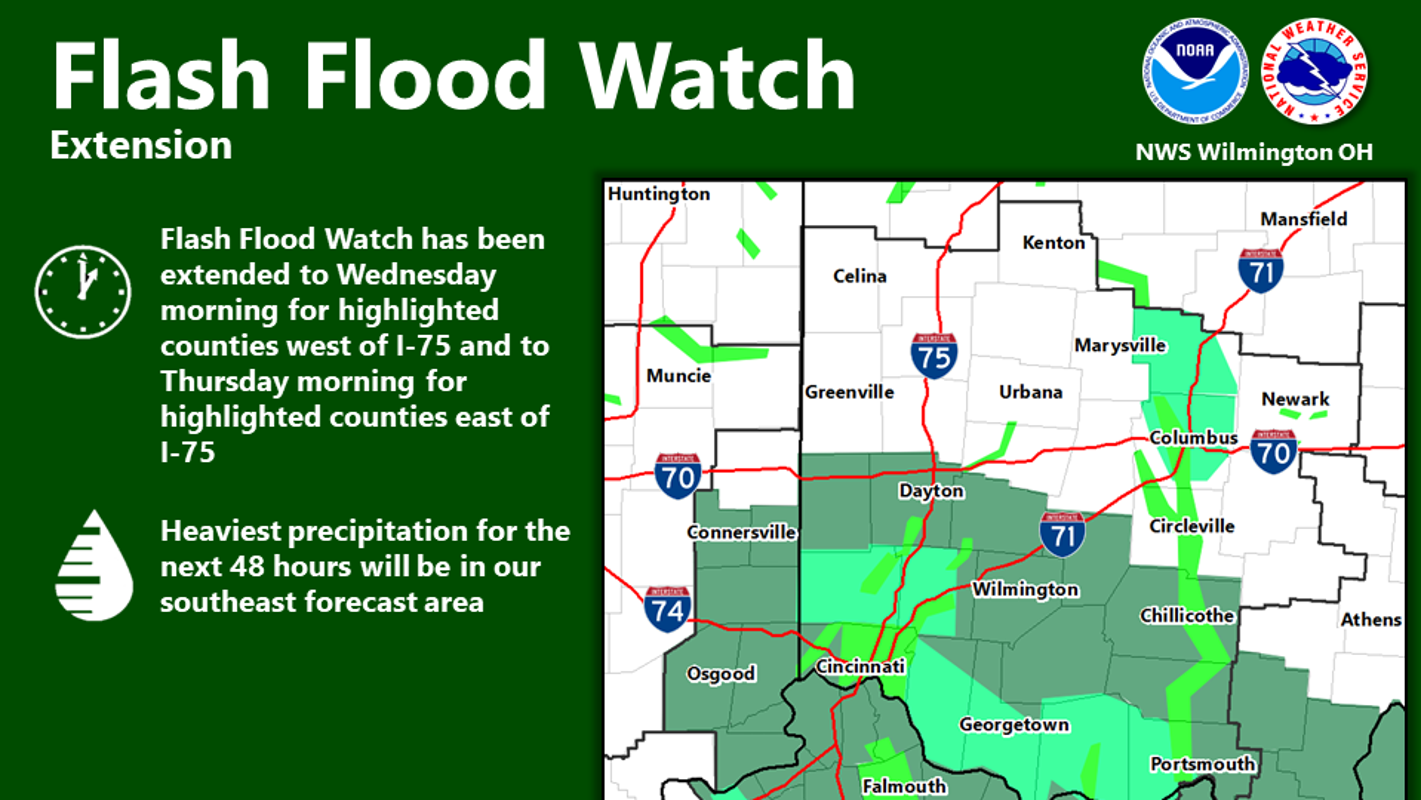Understanding Flood Warnings: Guidance From The National Weather Service

Table of Contents
Types of Flood Warnings and Advisories Issued by the NWS
The NWS issues several types of alerts to inform the public about potential or ongoing flooding. Understanding the differences between these alerts is key to taking appropriate action. These alerts help you understand the severity and urgency of the situation.
-
Flood Warning: This signifies that flooding is occurring or is imminent. Immediate action is required. You should evacuate if instructed to do so and move to higher ground. Examples of warning phrasing might include: "…a flood warning is in effect…," or "…flooding is expected to occur…"
-
Flood Watch: A flood watch means that conditions are favorable for flooding. While flooding is not necessarily occurring, it's likely to happen. This is a time to prepare: monitor weather reports closely, review your evacuation plan, and gather essential supplies. An example might be: "…a flood watch is in effect…," or "…conditions are favorable for flooding…"
-
Flood Advisory: A less severe alert than a warning, a flood advisory indicates that flooding is occurring or is imminent, but the impact is expected to be less severe. While you don't need to evacuate immediately, you should remain alert and cautious. Phrasing might include: "…a flood advisory is in effect…," or "minor flooding is occurring…"
-
Flash Flood Warning: This is an extremely urgent alert indicating a sudden and rapid flood. Immediate action is critical. Seek higher ground immediately; driving through floodwaters is exceptionally dangerous. An example might be: "…a flash flood warning is in effect…," or "…a life-threatening flash flood is occurring…"
These warnings may also specify the type of flood, such as a river flood, coastal flood, or urban flood, providing more context for your location and potential risks.
Understanding NWS Flood Warning Dissemination Methods
The NWS employs multiple methods to disseminate flood warnings, ensuring broad reach and accessibility. It’s important to utilize multiple sources for redundancy.
-
NOAA Weather Radio (NWS Weather Radio): This dedicated weather radio network broadcasts continuous weather information, including warnings and advisories. It's a reliable source even during power outages. Make sure you have a NOAA Weather Radio with battery backup.
-
Television and Radio: Local news broadcasts frequently relay NWS warnings and provide updates on developing weather situations. Pay close attention to weather segments.
-
Mobile Apps and Websites: Numerous weather apps, including the official NWS app and website (weather.gov), provide real-time alerts and forecasts directly to your mobile device or computer.
-
Emergency Alert System (EAS): This system delivers urgent alerts through television and radio broadcasts. You'll hear a distinct tone followed by an important message.
-
Social Media: The NWS utilizes social media platforms to share urgent updates and disseminate warnings. However, always verify information from official sources.
Responding to Flood Warnings: Safety Precautions and Evacuation Procedures
Receiving a flood warning necessitates immediate action. Your safety is paramount.
-
Move to higher ground: This is the most crucial step. Evacuate if instructed to do so by authorities.
-
Avoid driving through flooded areas: Floodwaters can be deceptively deep and fast-moving, concealing hazards like downed power lines or washed-out roads. The phrase "Turn around, don't drown" emphasizes this critical safety precaution.
-
Never walk or swim in floodwaters: Floodwaters are often contaminated with sewage, chemicals, and debris, posing significant health risks. Electrical hazards are also present.
-
Stay informed: Continue monitoring weather reports and follow instructions from emergency officials.
Post-Flood Safety and Recovery
Returning to a flooded area prematurely can be incredibly dangerous.
-
Assess damage safely: Wait for officials to deem the area safe before returning. Check for structural damage, gas leaks, and electrical hazards.
-
Contaminated water: Floodwaters are highly contaminated. Avoid contact and follow guidelines for proper cleanup.
-
Flood insurance: Consider flood insurance to protect your property against future flood damage.
-
Disaster relief: Various agencies provide assistance following floods. Contact your local authorities for information.
Conclusion: Staying Safe with Understanding Flood Warnings
Understanding the different types of flood warnings issued by the National Weather Service is crucial for protecting yourself and your property from the devastating impacts of flooding. By taking appropriate safety measures, staying informed, and following evacuation instructions, you can minimize risks and ensure your safety. Stay safe this flood season by understanding flood warnings from the National Weather Service. Learn more and stay informed today!

Featured Posts
-
 Dreyfus Affair A Century Of Injustice A Plea For Redemption
May 25, 2025
Dreyfus Affair A Century Of Injustice A Plea For Redemption
May 25, 2025 -
 Louisiana Inmates Attempted Escape Hair Trimmers Used In New Orleans Jail Break
May 25, 2025
Louisiana Inmates Attempted Escape Hair Trimmers Used In New Orleans Jail Break
May 25, 2025 -
 Jymypaukku Muhii Tuukka Taponen F1 Autossa Jo Taenae Vuonna
May 25, 2025
Jymypaukku Muhii Tuukka Taponen F1 Autossa Jo Taenae Vuonna
May 25, 2025 -
 How To Recognize And Respond To A Flash Flood Emergency
May 25, 2025
How To Recognize And Respond To A Flash Flood Emergency
May 25, 2025 -
 Soerloth Tan La Liga Ya Doertlue Gol Darbesi
May 25, 2025
Soerloth Tan La Liga Ya Doertlue Gol Darbesi
May 25, 2025
Latest Posts
-
 Swiatek Wins In Madrid De Minaurs Tournament Ends In Straight Sets
May 25, 2025
Swiatek Wins In Madrid De Minaurs Tournament Ends In Straight Sets
May 25, 2025 -
 Madrid Open Update De Minaurs Early Exit And Swiateks Dominant Win
May 25, 2025
Madrid Open Update De Minaurs Early Exit And Swiateks Dominant Win
May 25, 2025 -
 De Minaur Out Of Madrid Open After Straight Sets Loss Swiatek Triumphs Over Keys
May 25, 2025
De Minaur Out Of Madrid Open After Straight Sets Loss Swiatek Triumphs Over Keys
May 25, 2025 -
 Alex De Minaurs Madrid Open Exit Straight Sets Defeat And Swiateks Victory
May 25, 2025
Alex De Minaurs Madrid Open Exit Straight Sets Defeat And Swiateks Victory
May 25, 2025 -
 Grand Slam Debut Alex Eala Set For Paris
May 25, 2025
Grand Slam Debut Alex Eala Set For Paris
May 25, 2025
